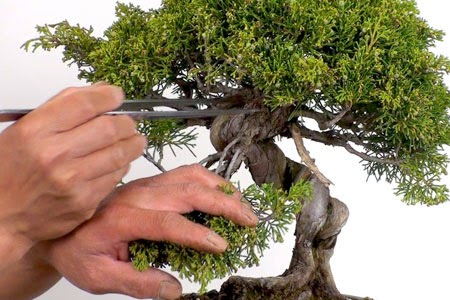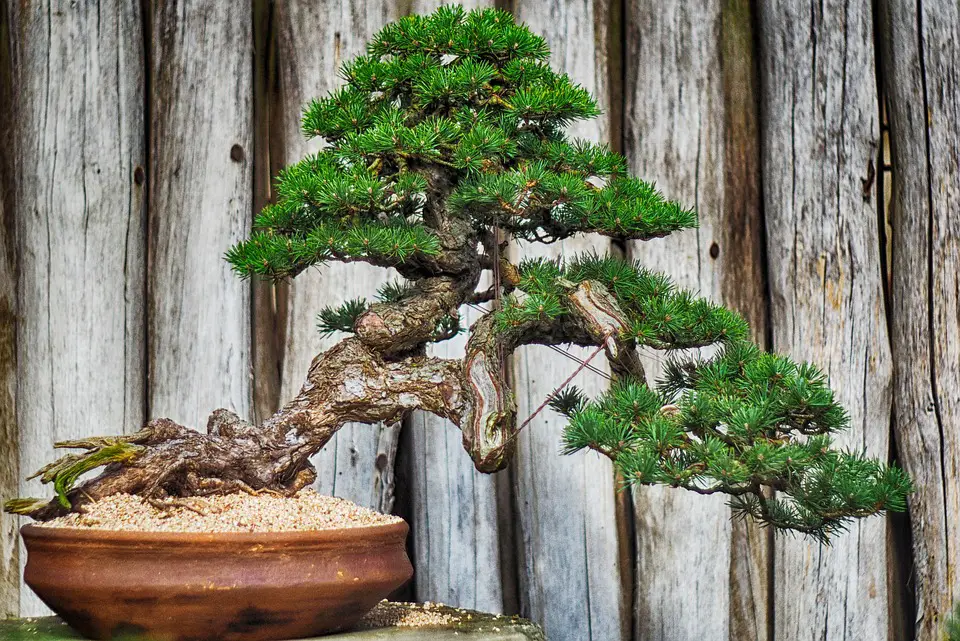We use affiliate links to run our site. When you buy through links on our site, we may earn an affiliate commission, without any added cost to you. Learn more
Lately, you’ve been thinking about getting a bonsai tree. You love the way they look—elegant, serene, and exotic. But then you remember that bonsai trees require upkeep, like all plants, and the thought of having to prune your bonsai tree is enough to make you abandon the idea altogether.
What if I told you that pruning your bonsai tree is simple and easy? And this guide will show you how to properly prune your bonsai tree step-by-step so that you can keep it alive and thrive.
What Is pruning?
Pruning is the process of carefully removing leaves, branches, roots, and flowers from a plant. It is often done to shape the plant, control its size, or remove damaged or unwanted growth.
When pruning bonsai, the goal is usually to create a miniature replica of a full-sized tree. This involves careful selection of which branches to remove in order to create the desired shape. Bonsai pruning is a skill that takes many years to master.
No matter what kind of bonsai you have, pruning is the most important part of bonsai preparation. It is how you control a plant’s natural growth and maintain a proper shape.
There are many different forms of pruning, and each has its own purpose and effect on the plant. When done correctly, pruning can help create a beautiful and healthy bonsai tree.
Tools For Bonsai Pruning:
To successfully prune a bonsai, you will need a few key tools.
- A set of scissors or pruner for different parts of the plant viz leaves small branches, buds, etc. Look for a pair that is comfortable to hold and makes smooth cuts.
- A pruning saw for cutting older branches in particular. This is essential for cutting larger branches that can’t be handled with scissors. A pruning saw has a very thin blade that can make smooth, clean cuts without damaging the branch.
- A branch bender can also be helpful for shaping your bonsai trees and giving them the desired curve or bend..
The tools you use will make a big difference in the quality of your cuts and the overall look of your bonsai tree.

Types of Bonsai Pruning
Pruning is an important part of bonsai care. There are two main types of pruning: structural pruning and maintenance pruning.
Structural Pruning:
This is a major form of pruning and is done more than once in the lifetime of the plants. It gives some radical structural changes to the plant. In most cases, structural pruning includes removing major branches of the plant.
The basic rule of pruning is you should prune “one of two opposite branches” on the trunk. You can always give the shape to your bonsai the way you choose, just remember once you cut a branch from the trunk it will never grow again. So proper decision is the key.
Maintenance Pruning:
This is
Shoots Pruning:
Pruning of shoots is generally done to inhibit the natural free growth of the plant. But also allows light and air to reach the lower branches of the plant. Process and frequency may differ from plant to plant depending on its variety or cultivar.
Leaf Pruning:
This is generally done to plants with bigger and broader leaves. Clipping down leaves
You need to remove the leaves from the base just leaving the leaf petiole on the branch. From there, smaller shoots and leaves will grow.
Root pruning:
It is by far the most difficult part of pruning. The best time to prune roots is at the time of reporting. The seasonality differs from plant to plant. I will not go into details about root pruning it deserves a separate article.
Buds pruning:
This form of pruning generally has to do with deciduous plants. During the beginning of the spring when the growth starts to appear, pinch the buds from the plant.
Sometimes you may have to add some fertilizers to ensure the plant doesn’t remain nutrition deficient.
Conclusion:
In conclusion, pruning is an important part of bonsai care. There are many different types of pruning, and the best method to use depends on the type of tree and the desired results.
Pruning shapes the tree controls its size and encourages new growth. It is a necessary part of keeping a bonsai healthy and beautiful.
I hope this post was helpful in getting an overview of the types of pruning involved in bonsai preparation. If you like the information don’t forget to share it with others too.
Amazon and the Amazon logo are trademarks of Amazon.com, Inc, or its affiliates.

Thanks for making another Bonsai article. A friend of mine is one of the people who maintains the Bonsai collection at the National Arboretum. I asked him to prune a Japanese Maple in a pot for me, destined to be put in the ground. We’ll see how that looks in a few years. I think a large tree with a Bonsai shape could look pretty neat.
A minor correction: you used the word “reporting” when you meant “repotting”. Otherwise, a nice article.